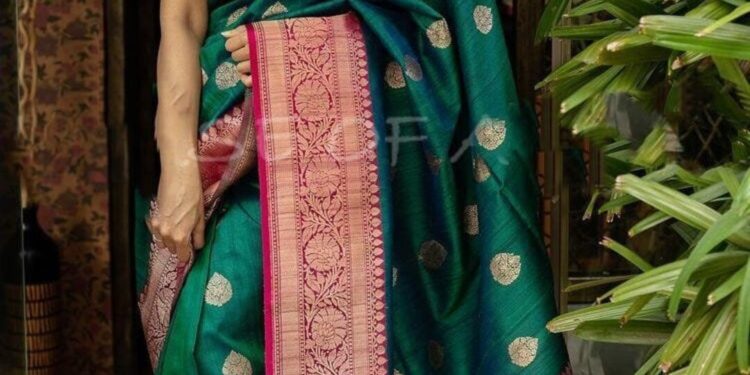Western India still uses bandhani, one of the earliest known techniques for tie-dying, extensively. The technique for creating bandhani fabric involves pinching extremely small pieces of fabric and tying them by picking the fabric with the fingernails into numerous tiny bindings that form a symbolic design to create an elaborate pattern of dots. The material is then put into several dye vats to create vivid and lovely colours.
The word bandhani is derived from banda, which means “to tie” in Sanskrit.
The majority of bandhini production facilities now are located in Gujarat, Rajasthan, Sindh, Punjab, and Tamil Nadu, where it is known as sungudi.
According to the local delicate, Bandhani is also known in Tamil as Bandhej, Bandhni, Piliya, and Chungidi. Another distinctive variation of the tie dye process used in Rajasthan is called leheria or leheriya, which comes from the word lahar, which means wave. Depending on how the fabric is knotted, other tying methods include Mothra, Ekdali, and Shikari.
Overview
From the word “Bandhan,” which means to tie up, comes the phrase “Bandhani.” The bandhani technique necessitates a high degree of aptitude. The method entails dyeing a fabric that has been firmly knotted with thread at various spots, generating a variety of designs depending on how the cloth is tied, such as Chandrakala, BavanBaug, Shikari, etc. The main hues used in bandhani are yellow, red, blue, green, and black.
The primary colours used in bandhani are neutral tones. The best colours and combinations are possible with Bandhani since it is a tie-and-dye process and the dying is done by hand.
The Khatri population of Kutchh and Saurashtra has been responsible for all Bandhani craftsmanship. In the native language (‘Gujarati’), ‘Bheendi’, a metre of fabric can have thousands of tiny knots. After being dyed in vivid hues, the knots are opened to reveal a pattern. The finished goods may be categorised traditionally as “khombhi,” “GharChola,” “Chandrakhani,” “Shikari,” “Chowkidaar,” “Ambadaal,” etc.
Rajasthan is another state that produces bandhani art, but the Kutch and Saurashtra regions of Gujarat are distinguished by their use of various hues and patterns. various hues in Bandhani signify various things. People think that a newlywed’s life will be lucky if they wear red.
Bandhaniodhnis sarees
turbans are famously produced in places like Jaipur, Sikar, Bhilwara, Udaipur, Bikaner, Ajmer, and Jamnagar in Gurjarat in Rajasthan. Since ancient times, several communities in Rajasthan have adhered to the custom of wearing turbans with various bandhani patterns. These were used to establish the person’s place of residence in the community.
History
Bandhani’s earliest records are from the Indus Valley. According to civilization, dyeing may have started as early as 4000 B.C. The paintings of the Buddha’s life from the sixth century that were discovered on the wall of Cave I at Swarajshop provide the oldest illustration of the most prevalent sort of Bandhani dots. Texts from Alexander the Great that discuss the exquisite Indian printed cottons make reference to this form of art. The first Bandhani saree was worn during Bana Bhatt’s Harshacharita in a royal wedding, according to evidence from historical texts. It was thought that a bride’s future may be brightened by donning a Bandhani saree online. The proof of these Bandhani sarees is displayed on the Swarajshop walls.









